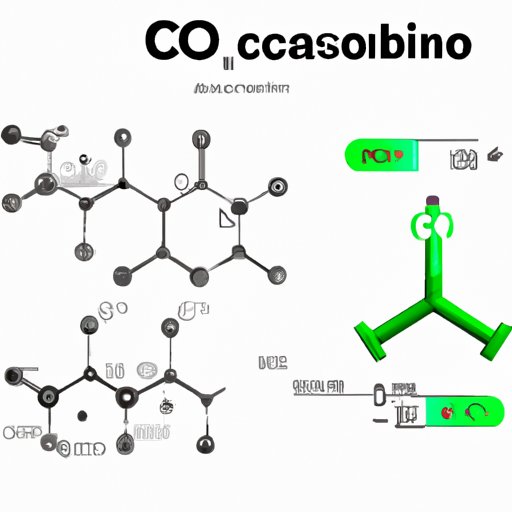
Introduction
Carbon dioxide is a waste product that is produced when we breathe. It is transported in the blood and eliminated through the lungs. However, when the levels of carbon dioxide in the blood are too high, it can have serious consequences for the body. In this article, we will explore how to lower high carbon dioxide levels in the blood and discuss the importance of maintaining balanced carbon dioxide levels.
Lifestyle Changes
Maintaining a healthy lifestyle is crucial to managing carbon dioxide levels. Smoking and exposure to pollutants can have a detrimental effect on respiratory health, making it more difficult for the body to eliminate carbon dioxide. Quitting smoking and reducing exposure to pollutants can improve respiratory function and help to lower carbon dioxide levels in the blood.
Exercise is also an important factor in promoting respiratory health. Regular physical activity can strengthen the respiratory muscles, improve lung function, and aid in the elimination of carbon dioxide. It is recommended that adults engage in at least 150 minutes of moderate-intensity aerobic exercise each week.
Dietary changes can also promote respiratory health. Eating a diet rich in fruits, vegetables, and whole grains can provide the body with the nutrients it needs to maintain respiratory function.
Breathing Techniques
Deep breathing exercises can be a powerful tool in improving carbon dioxide levels in the blood. When we take deep breaths, we are able to bring more oxygen into the body and eliminate more carbon dioxide. One simple exercise to try is called diaphragmatic breathing. This involves inhaling deeply through the nose, allowing the belly to expand, and exhaling slowly through the mouth.
It is important to be aware of warning signs during breathing exercises. If you experience dizziness, lightheadedness, or shortness of breath, stop the exercise immediately and seek medical attention.
Supplemental Oxygen
Supplemental oxygen therapy is a treatment option for people with respiratory illnesses like chronic obstructive pulmonary disease (COPD). It involves the use of a device that delivers oxygen directly to the lungs, providing the body with more oxygen and helping to eliminate carbon dioxide.
While supplemental oxygen therapy can be effective in managing high carbon dioxide levels, it is important to use it under the guidance of a healthcare professional. There are potential drawbacks to the therapy, including the risk of oxygen toxicity and the development of dependence on the device.
Medications
Medications can also be used to manage respiratory illnesses and promote the elimination of carbon dioxide. Bronchodilators are a common type of medication that can help to open up the airways and improve breathing. Corticosteroids may also be used to reduce inflammation in the airways.
However, it is important to be aware of the potential side effects and risks associated with medication use. Common side effects of bronchodilators include headache, nausea, and tremors. Corticosteroids can increase the risk of infection and may lead to other complications.
Respiratory Therapy
Respiratory therapy is a treatment option for people with severe respiratory symptoms. It involves the use of mechanical ventilation to help the body eliminate carbon dioxide. Mechanical ventilation can be delivered through a machine that breathes for the patient or through a mask that the patient wears.
While respiratory therapy can be effective in managing high carbon dioxide levels, it is not without risks. Mechanical ventilation can lead to complications such as infections, damage to the lungs, and the development of dependence on the machine.
Conclusion
Managing carbon dioxide levels in the blood is crucial to maintaining respiratory health. Making lifestyle changes, such as quitting smoking and engaging in regular exercise, can have a significant impact on carbon dioxide levels. Breathing exercises, supplemental oxygen therapy, medications, and respiratory therapy are all treatment options that may be used to manage high carbon dioxide levels.
If you are experiencing symptoms related to high carbon dioxide levels, speak to your healthcare provider about the treatment options that may be right for you. By making lifestyle changes and trying the various treatment options available, you can maintain respiratory health and improve your overall quality of life.





